We are finally coming to grips with this product. It must most certainly be treated the same way we treat alcohol Even there we do fall down too often. having a beer for lunch is obviously counter productive but still out there.
Like alcohol we need dosage standards that are naturally safe enough and those who want to abuse been forced to obviously go for it. At least, unlike alcohol, your inhibitions are not directly influenced.
The big take home here is that the brain is directly affected negatively during one''s adolesence. Again, once in a long while is safe enough but nothing else.
How Modern Marijuana Changes the Brain
AUGUST 1, 2022
https://www.theepochtimes.com/how-modern-marijuana-changes-the-brain_4618031.html
Big things are happening for the humble marijuana (or cannabis) plant. On July 21, Senate Majority Leader Chuck Schumer (D-NY) introduced a bill to legalize marijuana at the federal level with Senators Ron Wyden (D-Ore.) and Cory Booker (D-N.J.).
Booker released a statement on the bill on July 21, saying this can undo the damage done by the War on Drugs.
Meanwhile anti-legalization advocates like Kevin A. Sabet are doing all they can to prevent the bill from passing the Senate and becoming law.
However, regardless of the outcome, this bill is likely to change the discourse around cannabis for years to come.
State legalization and subsequent commercialization of marijuana has given the drug a glow up. The drug, once associated with potheads, illicit dealings, and pungent herbal smells is fast becoming a legal, family-friendly, trendy, and Instagram-worthy herbal medicine.
The expectation was that after legalization, marijuana would become more controlled and safe. The states that have made moves to legalize first medical marijuana, then recreational marijuana, however, observed increases in illicit dealings, hospital admission rates, and cannabis addiction and use.
Potency and concentration of cannabis and its derivatives, car crashes involving cannabis and abuse, and use in young people have also met new highs.
Marijuana is getting a foothold into medicine and households. It has been the most-consumed illicit drug globally and in the United States (pdf) for decades, though marijuana use is still far behind alcohol and tobacco.
The two words cannabis and marijuana are often used interchangeably, but there are differences in nuance. Cannabis generally refers to the entire cannabis plant, while marijuana refers to products made from cannabis such as dried leaves, or flowers. The word marijuana also implies that it is a cannabis product high in tetrahydrocannabinol (THC), the main constituent and the psychoactive derivative of cannabis.
Since legalization and commercialization, the THC content of cannabis products has been increasing. It has gone up from less than 2 percent (prior to the 1990s) to the current levels of 17 percent, and possibly even 30 percent as consumers seek bigger highs.
Gummi Bears are displayed in a glass jar on April 3, 2009 in San Francisco, California. Candy with marijuana in it has been handed out by mistake to fifth-grade children. (Justin Sullivan/Getty Images)
Recreational Marijuana: A Changed Product
Some parents’, grandparents’, and educators’ memory of recreational weed is that of its humbler eras of 2 to 4 percent THC. There is a mismatch in perception, as high-THC level products are being packaged into innocent-looking gummies, candies, vapes, drinks, and many more. Though these are only legal for adult consumption, younger people are using it more than ever. Teenagers and young adults, whose brains are still in development, are consuming marijuana at unprecedented potencies. Marijuana use is linked with mental disorders, and memory and cognitive decline, with younger people the most at risk.
To add the cherry on top, researchers such as psychiatrist and professor Dr. Deepak D’Souza from Yale University, believes the high potencies, longer periods of use, may make findings from studies in the ’70s, ’80s, ’90s irrelevant to the current marijuana landscape.
“It’s the potency…the weed that’s available now [is] so different from what it was in the 1960s,” D’Souza told The Epoch Times.
Back then, weed was less accessible, less potent, and most people used it sporadically. Today, marijuana is more accessible, easily obtained in both licensed and unlicensed stores, increasingly potent, with an increased demographic of people taking the drug in the long-term.
“Studies done in the past would suggest that only about one in 10 people would develop a cannabis use disorder (addiction to cannabis),” D’Souza said. “I think more recent studies … in the current landscape of marijuana would suggest that that number is actually a lot higher than we previously thought.”
An assortment of marijuana for sale at Catalyst Cannabis Dispensary in Santa Ana, Calif., on Feb. 18, 2021. (John Fredricks/The Epoch Times)
How Marijuana Works
Marijuana acts on the endocannabinoid system that exists in the brain and spinal cord.
Researchers are not exactly sure how marijuana creates its euphoric effects, but studies suggest that it is the binding of THC to the endocannabinoid receptors in the brain that creates euphoria. There are two endocannabinoid receptors, CB1 receptors are in the brain and CB2 receptors are in the spinal cord. THC and most cannabinoids can bind to both.
Apart from THC, there is also another common cannabinoid: cannabidiol (CBD).
CBD, the second most common cannabinoid, also interacts with the endocannabinoid system, though its actions are more complex. CBD, however, does not give users the high found in THC. CBD is generally the active ingredient in medicinal marijuana, and there are many studies linking the cannabinoid with therapeutic properties including pain and seizures.
Since the 1900s, the potency of THC in recreational marijuana has been increasing, while CBD percentage has decreased. One can find 99 percent THC oils being dispensed. Consumers can add this to their vapes, or for other forms of consumption.
Recreational Marijuana: The Young and Mental Health
Though the general advice for younger people is to stay off the drug until adulthood, D’Souza senses that an increasing number of younger people are using weed recreationally, often unaware of the exact implications of consumption.
“More and more young people … are using cannabis, and they are getting younger,” he said. “And they’re using more potent forms.”
He is not wrong. Cannabis use in young people is reaching record rates, increasing from 37 percent in 2014 to 43 percent in 2019. Teenagers of today are also more likely to consume marijuana than tobacco.
Many studies have suggested that cannabis, especially its THC component, may affect neurodevelopment in growing brains, as it disrupt processes in the brain. The brain only completes its full maturation at about the age of 25 to 26. Some studies suggest maturation may come even later than that. During adolescence, brains go through “pruning,” which is a process where necessary brain cells and connections are strengthened and the unnecessary neurons are removed.
“The process of pruning is important, it’s really important in preparing the brain for the demands of adulthood,” D’Souza said.
The endocannabinoid system is also important in neurodevelopment. In our bodies we produce two chemicals that can bind to CB1 and CB2 receptors.
“One is called anandamide, named after the Sanskrit word meaning bliss,” he said. “And the other is called 2-AG.”
When the endocannabinoid system is activated, these chemicals will be released and bind to the receptors. The chemicals are specific. They act on a small targeted area and “produce the effects for just milliseconds before…they are inactivated.”
Researchers believe that the binding of these chemicals allows the brain to select what neurons will be strengthened and what neurons will be removed in neurodevelopment, according to D’Souza.
Whilst these two natural chemicals act for a very short, transient time, THC does not.
THC in the body can last for minutes to hours, smoked joints give a quick and strong burst in minutes but consumed THC in gummies and other food start slow and last for hours. THC is also non-selective and will bind to all the areas of the brain with these receptors, distorting the targeted communication in the brain.
“The scientific term we use is that THC produces effects that are … non physiological effects, and those … effects may have far reaching consequences.”
If the endocannabinoid system is, as researchers believe, “really important in directing … neurodevelopmental processes, you could imagine that when an adolescent whose brain is still maturing smokes cannabis, it may disrupt that process,” said D’Souza.
The prefrontal cortex, the area of the brain in charge of critical thinking and decision making, is the last area to fully mature. Research suggests that the maturation in this area is what separates teenagers and young adults from fully matured adults.
Brain scans of drug abusers often show a decreased brain matter volume in the prefrontal cortex, suggesting increased in impulsivity and poor decision making.
Since younger people have immature prefrontal cortexes, this may be why early marijuana use increases risks of addiction and brain impairment. A study found 10.7 percent of teenagers between the age of 12 and 17 developed an addiction to cannabis within 12 months of use, and 20.1 percent developed addiction after 3 years. For young adults aged 18 to 25, 6.4 percent developed addiction in a year, and 10.9 percent in three years.
Cannabis use is also linked to mental health disorders, especially in younger people, particularly those at risk of certain mental health disorders, including depression, psychosis, and schizophrenia.
Though it should be noted that not everyone who uses cannabis will develop mental health disorders and other health conditions, studies in younger people have linked the drug with various mental disorders including psychosis, schizophrenia (some studies suggest a causal link), anxiety, and depression. Some studies also link cannabis consumption with an exacerbation of present psychiatric symptoms. Schizophrenia has lifelong consequences and patients will need to be treated or monitored over their lifetime.
The majority of endocannabinoid receptors in the brain reside in the hippocampus, a seahorse structure deep in the brain important for memory formation and storage. Studies on long-term and short-term effects of cannabis have both found that cannabis affects learning and episodic memory.
Studies on adolescents have also found that cannabis use was associated with a reduced brain matter volume, a 2021 study found that it has been linked with brain aging, especially in the prefrontal cortex. Persistent use of cannabis in adolescence has also been associated with permanently reduced IQ by 5 to 13 points.
Topographical overlap between age-related thinning, cannabis effect, and cannabinoid 1 (CB1) receptor availability (courtesy of Dr. Matthew D. Albaugh and the Journal of the American Medical Association)
Though parenting plays a role in preventing teens from abusing cannabis and severe adverse effects, it can be hard for parents and educators to make the connection when their image of cannabis is mostly benign.
The industry is also trying to make cannabis appealing to the younger generations despite regulations prohibiting minor use.
D’Souza argued that the age limit that has been set is “disingenuous,” due to the investment in products that are enticing to pre-teens and teenagers.
“Companies are making gummy bears, gummy bears, I would hardly think that adults would be interested in gummy bears. That’s just a disingenuous way of marketing to young adults below the age,” D’Souza said.
“We really have done a poor job at educating the public.”
Marijuana is weighed at a medical marijuana dispensary in Vancouver, Feb. 5, 2015. (The Canadian Press/Jonathan Hayward)
Medical Cannabis: A Ticket to Becoming Recreational?
Studies shown that medicinal cannabis does have therapeutic effects against pain, chemo-therapy induced nausea and vomiting, and spasticity from multiple sclerosis.
There is also anecdotal evidence of the drug’s effects against seizures in neurodegenerative diseases and epilepsy.
However, regulation of medicinal marijuana use varies drastically across different states.
Connecticut, for example, approves medicinal marijuana use for over 40 conditions including cancer, amyotrophic lateral sclerosis, cystic fibrosis, multiple sclerosis, and many others. New York sets no limit on the number and type of conditions.
There are also states with strict laws; Wyoming only approved CBD-oils in 2015 and limited its use to seizures only.
Some studies also suggest benefits in Alzheimer’s disease, cancer, and depression, but “for the overwhelming majority of those conditions, there is very little evidence to support the benefits of marijuana for these conditions, with some exceptions,” said D’Souza.
Studies also found that most (around 90 percent) people taking medical marijuana reported that it reduced their symptoms, and two-thirds of them used less prescription medicines.
For the medical marijuana users that report addiction, around 80 percent use recreational marijuana.
Medical marijuana has helped people, but D’Souza argued that there are political motivations behind medicinal marijuana legalization. “Those who wanted to legalize marijuana realized and planned very early on that if they could get the public at large to accept medical marijuana, then it would be a very short step from there to make marijuana completely legal.”
“And that is exactly what is happening.”
Currently, 38 states have approved medical marijuana and 18 of these states also approved recreational marijuana use in adults.
The states first to approve marijuana medically were often also the first to approve it recreationally, with some exceptions:
Colorado and California were leaders in approving medical marijuana, doing so long before the movement for legalization gained momentum. Recreational approval only came after the movement gained momentum, thus these two states took 12 and 20 years respectively to legalize recreational marijuana. There are also states that were late to the overall medical marijuana program, but quickly approved recreational use, such as Massachusetts, and the district Washington DC. They legalized medical marijuana just ahead of the push for legal recreational marijuana use, and it took these two states only around 4 years to approve recreational marijuana.
Full legalization of cannabis often opened doors to commercialization. Each new policy further opened the doors for cannabis access, but these are not without health implications.
A study on youths from 2008 to 2016 in four states that legalized recreational cannabis (Colorado, Washington, Alaska, and Oregon) found that cannabis addictions reported in teenagers 12 to 17 increased from 2.18 to 2.72 percent—a 25 percent increase.
Colorado: A Case Study
Colorado legalized medical marijuana in 2000, and was the first state to legalize recreational marijuana in 2012, before commercializing it in 2014.
Since its legalization, it saw increases in marijuana-involved traffic accidents, use and abuse in teenagers, hospital presentation from cannabis adverse effects, and poison center presentation for children and pets who unwittingly ingested cannabis from medicinal cabinets.
Hospitalizations for cannabis related adverse effects increased by 45 percent (pdf) between 2006 and 2008 (pre-commercialization of medical marijuana) to 2009 to 2012.
From Colorado’s post-commercialization period to 2013 to 2014 (legalization and commercialization period for recreational marijuana), hospitalizations for cannabis-related conditions increased by another 66 percent (pdf).
These hospitalizations do not come without repercussions, and hospitals are reporting financial losses from cannabis-related treatments. A study (pdf) examining one hospital in a municipality in Colorado found that from 2009 to 2014, hospitalizations from cannabis-related bills increased by 375 percent and emergency department (ED) submissions increased from 9 percent to 15.3 percent.
It should be noted that the municipality did not legalize cannabis under Amendment 64, however the hospital saw an increasing presentation to the ED for people experiencing adverse effects from marijuana, with the majority of hospitalizations mental health involved, including suicide ideation, depression, and so on.
From 2009 to 2014, the hospital incurred at least $20 million in losses from cannabis patients not paying their bills. Other studies examining hospital presentations in Colorado found that from 2000 to 2015, hospitalization rates with marijuana-related billing codes doubled from 274 in 2000 to 593 per 100,000 hospitalizations in 2015. ED visits from mental illness were five times higher for bills that had marijuana-related codes than bills without.
A study on poison center reports in Colorado found that child reports of cannabis ingestion doubled from 1.2 per 100 000 population in 2009 to 2.3 per 100,000 population in 2015, and half of these reports were from children ingesting cannabis-containing gummies, and brownies, both of which are appealing to children. Though arguably, the reports are less than crayon poisoning reports every year, however as legalization invariably increases marijuana exposures, poisoning from cannabis in children is only going to increase as the drug becomes increasingly socially acceptable.
Additionally, traffic deaths involving drivers who tested positive for marijuana also increased since legalization of recreational marijuana. Traffic deaths involving marijuana more than doubled from 55 people killed in 2013 to 115 in 2018. In 2019, there were 163 alcohol-impaired traffic deaths in Colorado.
Cannabis use in teenagers and young adults in Colorado have also mostly showed an increasing trend. In 2019, 15.5 percent of teenagers aged 15 and younger consumed cannabis in the past 30 days, compared to 15.4 percent in 2013. Teenagers aged 16 to 17, and 18 and older also saw general increases, reaching 24.4 and 27.5 percent respectively as compared to 22.5 and 25.3 percent in 2013.
D’Souza likened the popularity among the younger generation and commercialism of cannabis with tobacco and alcohol. “Even though alcohol is supposed to be sold only to people over the age of 21, it’s very easy for young people, adolescents to get their hands on alcohol, and likewise I would expect no different…with cannabis.”
Correction: A previous version of this article marked the 2009 to 2012 period as “(post-commercialization)” under the section Colorado: A Case Study. The terminology quoted from the report caused confusion and has since been removed. Colorado legalized recreational marijuana use in 2012 and state-licensed retail sales, or commercialization, in 2014.
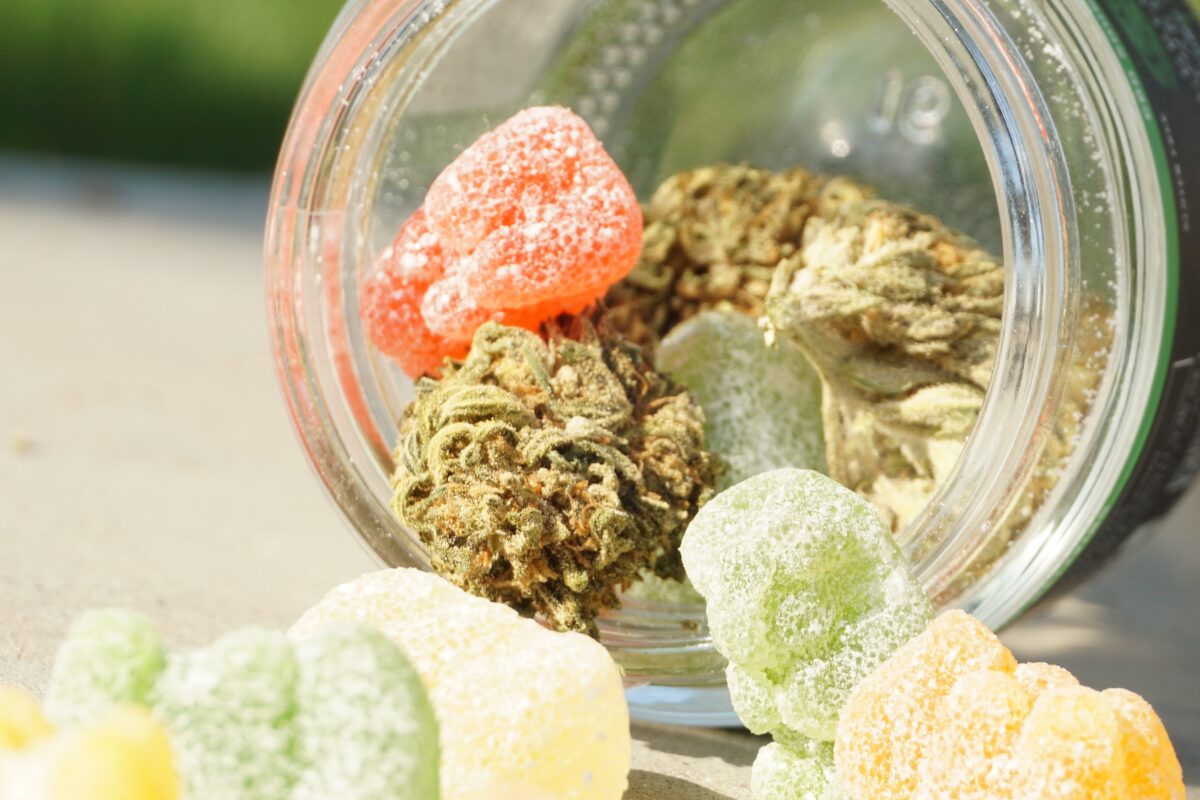
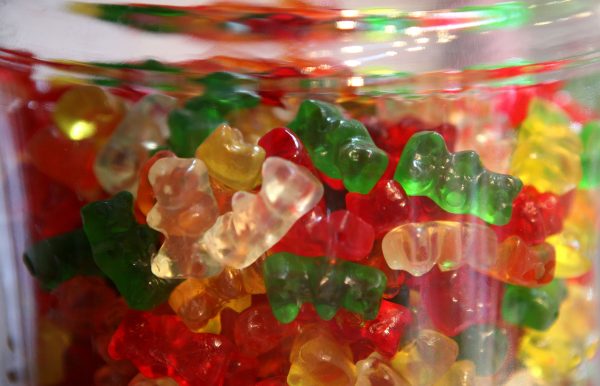
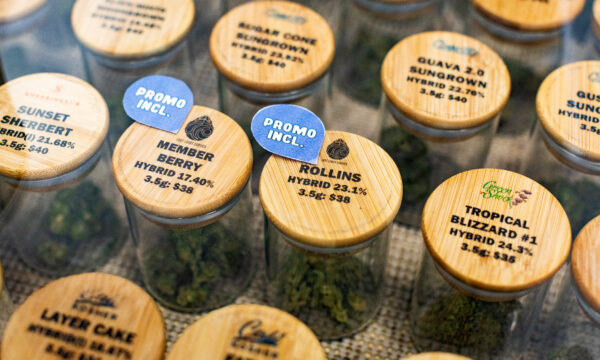
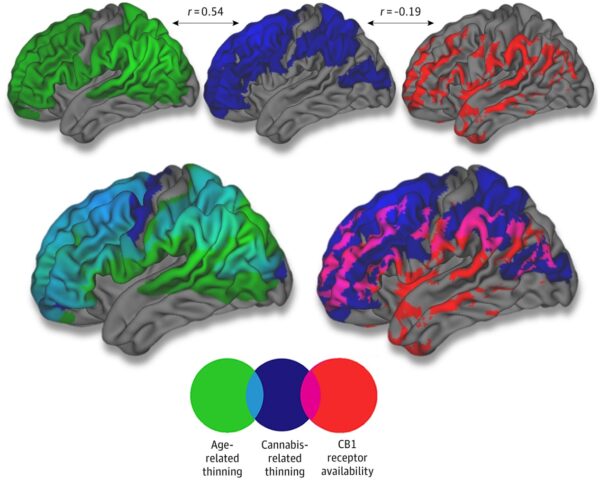
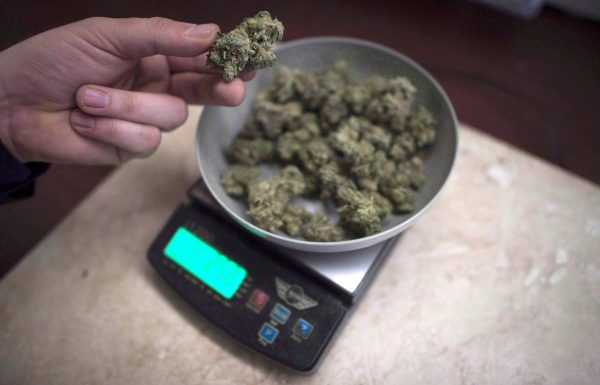
No comments:
Post a Comment